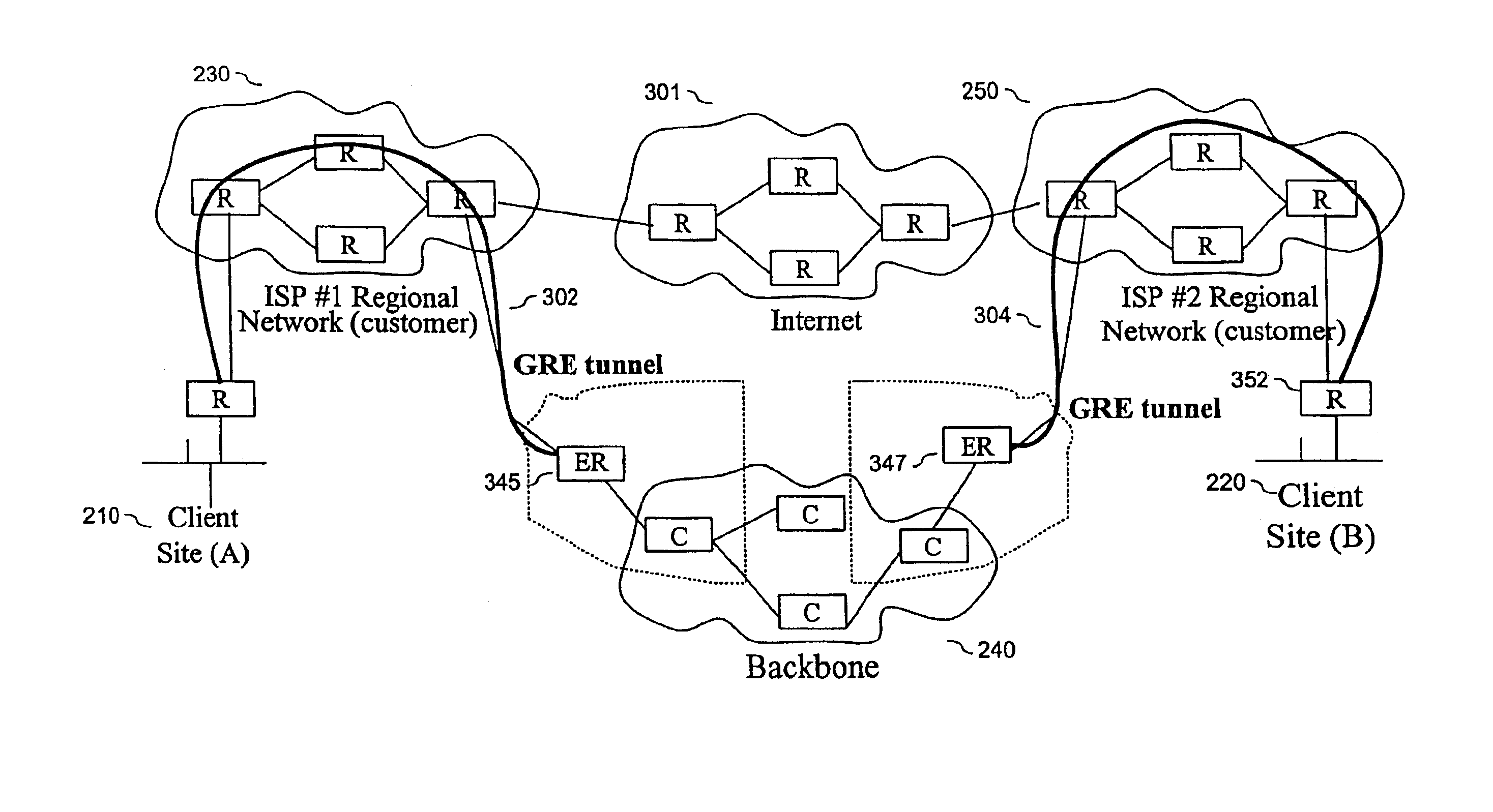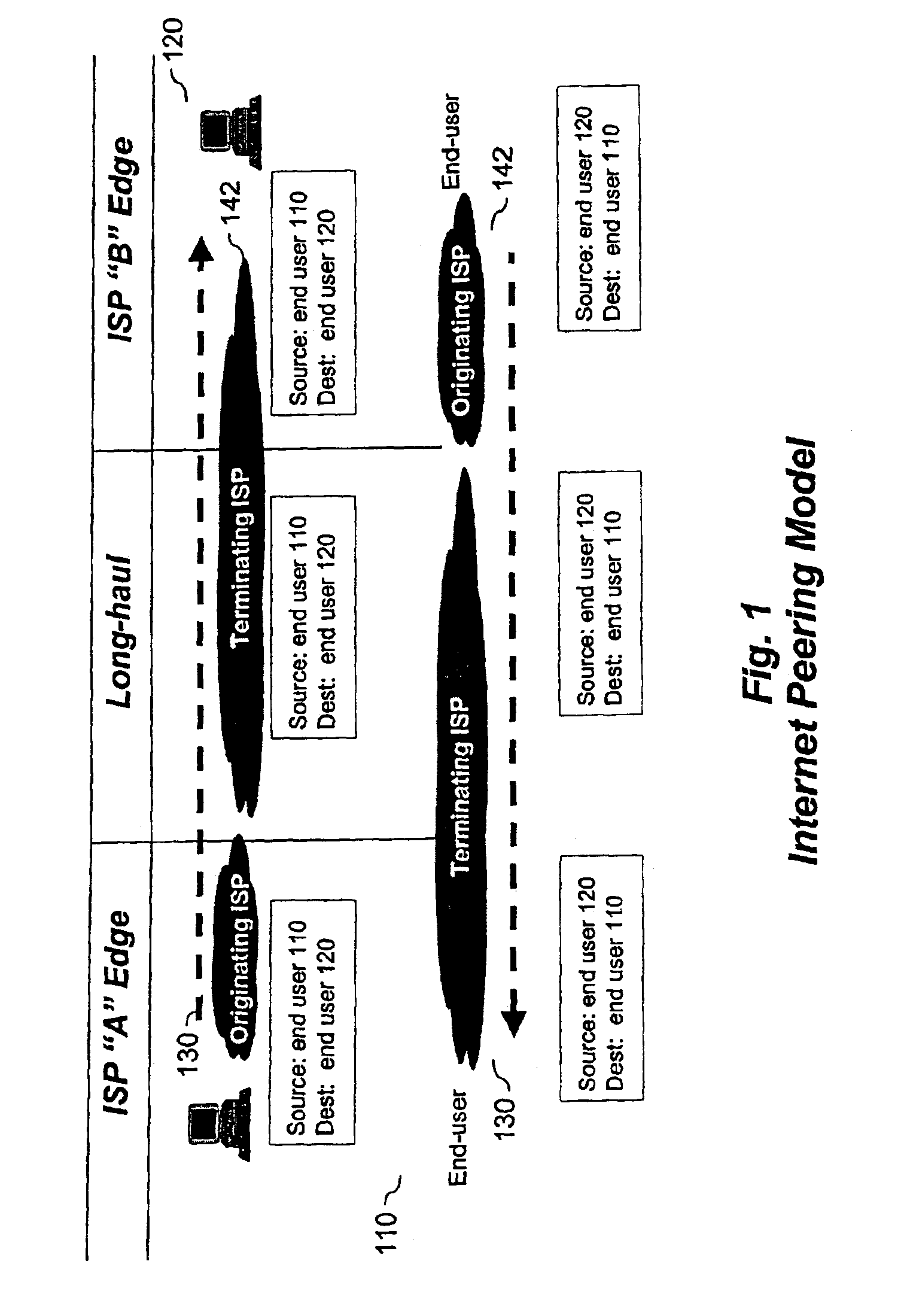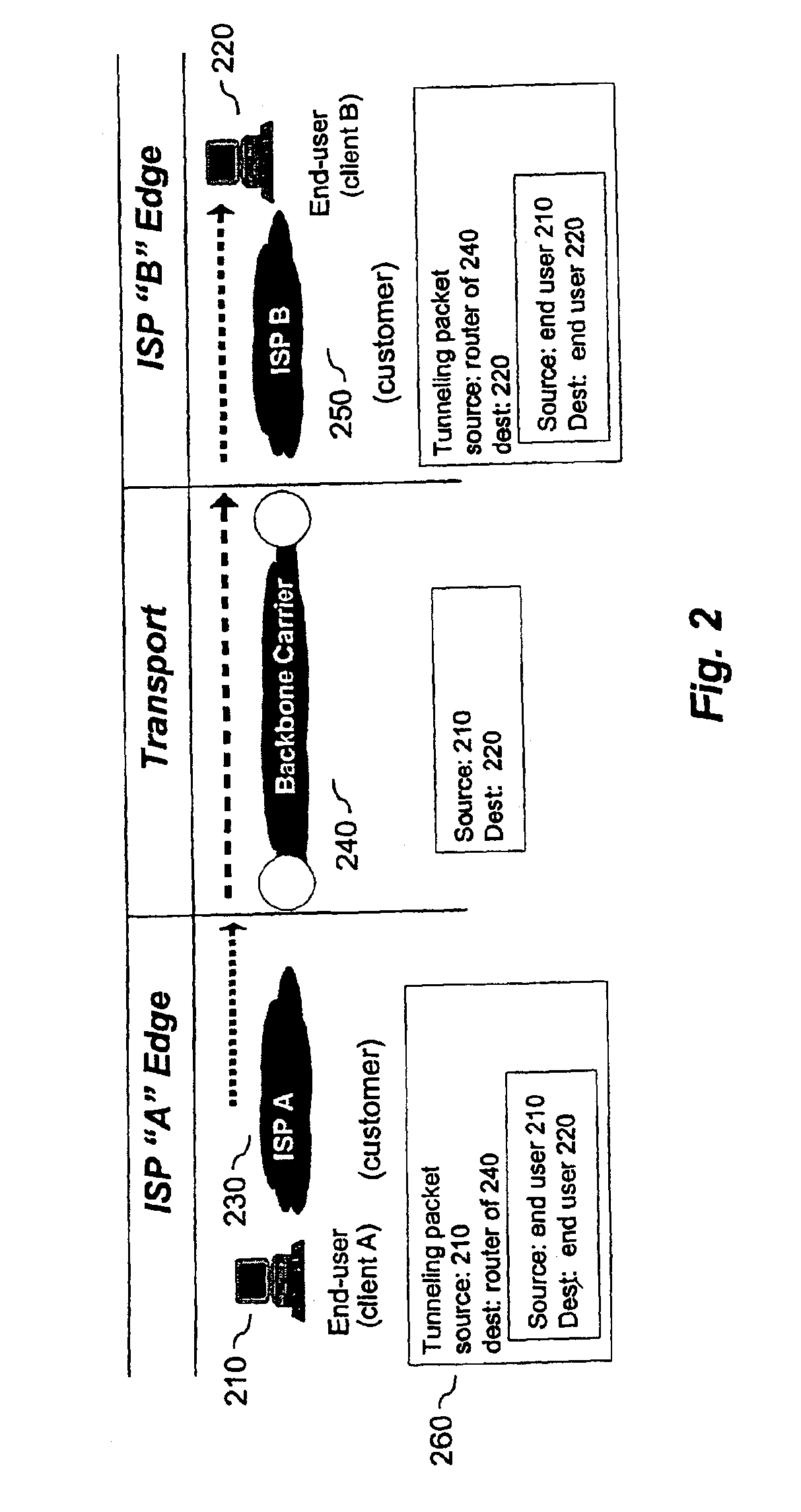Method and system for sending information on an extranet
a technology of information and extranet, applied in the field of methods and systems for sending information on extranet, can solve the problems of not being able to achieve radical upgrade, require a massive investment, and provide internet service providers (isps) , to achieve the effect of enabling the deployment of quality of service (qos) capable routers end-to-end in the internet, the problem is not currently practical, and the effect of radical upgrad
- Summary
- Abstract
- Description
- Claims
- Application Information
AI Technical Summary
Benefits of technology
Problems solved by technology
Method used
Image
Examples
Embodiment Construction
[0018]The method and system of the invention provide a single, symmetric path for forward and return traffic between two points on the Internet. In this case “symmetric” means that a packet between point A and point B will take the same path on the Internet as a packet between point B and point A. Moreover, as much of this path as possible is transmitted over a high speed backbone (also called an extranet). The described embodiments of the present invention aid in providing guaranteed Quality of Service (QoS) to clients, whether those clients are individual users, other carriers, or companies because the packets will take fewer hops and will be transmitted over a high quality backbone for a significant part of its journey.
[0019]The described embodiments of the present invention create a tunnel, such as a GRE tunnel, between a client's router and an edge router on the backbone. This process creates a logical interface on the client's router that is used to send traffic destined for o...
PUM
 Login to View More
Login to View More Abstract
Description
Claims
Application Information
 Login to View More
Login to View More - R&D
- Intellectual Property
- Life Sciences
- Materials
- Tech Scout
- Unparalleled Data Quality
- Higher Quality Content
- 60% Fewer Hallucinations
Browse by: Latest US Patents, China's latest patents, Technical Efficacy Thesaurus, Application Domain, Technology Topic, Popular Technical Reports.
© 2025 PatSnap. All rights reserved.Legal|Privacy policy|Modern Slavery Act Transparency Statement|Sitemap|About US| Contact US: help@patsnap.com



